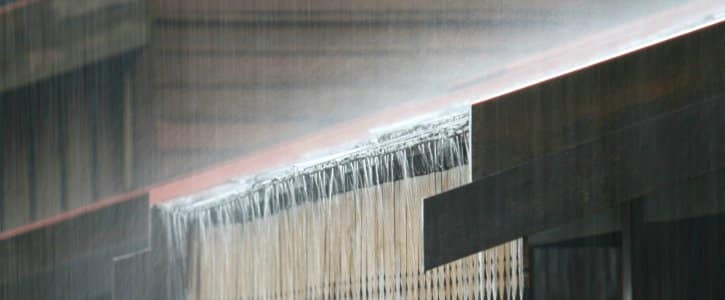
If a building houses expensive, critical machinery, it needs an extra-tough roof. From its design through to the maintenance plan, a roof that isn’t prepared to defend the machinery below it could result in costly production delays and damage. There are three steps to create a roof system that can offer the level of protection needed to keep your equipment safe.
1. Construct a Roof System that is Built to Last
Traditional roofs are built by attaching polyiso insulation to the roof deck, and then attaching the outer membrane to the polyiso insulation. But if a roof needs to be absolutely impregnable to protect the crucial machinery below, the roofer should install a layer of fiberglass mat roof board like DensDeck between the insulation and the membrane.
This strengthens the exposed membrane and makes it far less vulnerable to punctures or tears from debris or dropped tools. The best practice is to fully adhere all three layers (the membrane, DensDeck, and insulation) to the metal or concrete deck below. Metal trim should cap every termination point to give the roof extra strength.
2. Limit Access to Certified Personnel Only
Foot traffic, roof machinery maintenance, and dropped tools can damage even highly durable roofs. Mitigate the risk by limiting access to the roof; staff should be on the roof only if there is an explicit reason to be there. As an additional precaution, building owners should implement a sign-in procedure for everyone who goes up to the roof. This ensures that only certified personnel trained in roof safety and protocol can access the roof, and it creates accountability for what happens while they are up there.
3. Pay Extra Attention to Critical Areas of the Roof
The areas of the roof directly over the machines should be installed with thicker membrane, strip-in seams, and walk treads to lessen the impact of work and foot traffic. Make regular maintenance and inspection a consistent routine for the entire roof, but enhance these efforts for the strategic areas directly above costly machinery. For instance, clearing sensitive roof areas of debris is necessary to promote positive water drainage and prevent physical damage to the roof system.
When a building houses expensive, vital machinery, even a small leak can result in catastrophic damage below. Only the strongest, best-maintained roof can be trusted not to fail when your investments are on the line. To build and maintain a roof that can protect your production environment, ensure the roof is designed with extra reinforcements, is well maintained, and is accessible only by certified professionals.
